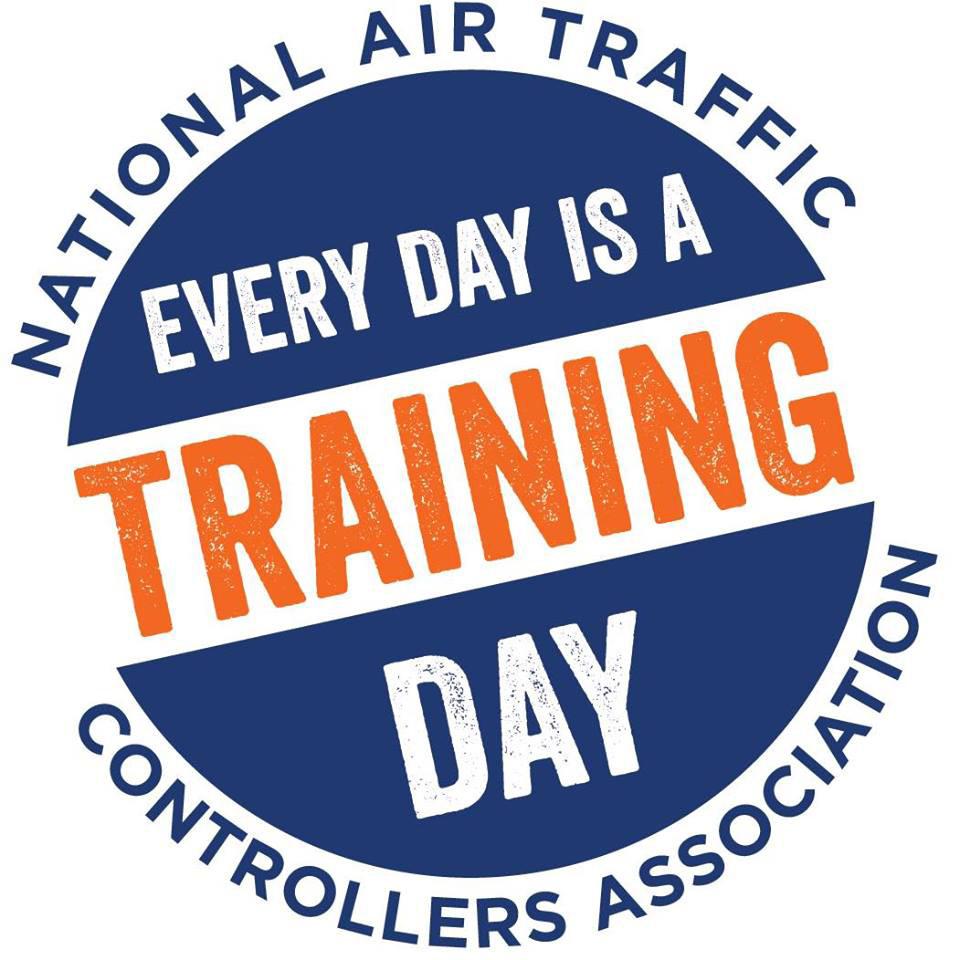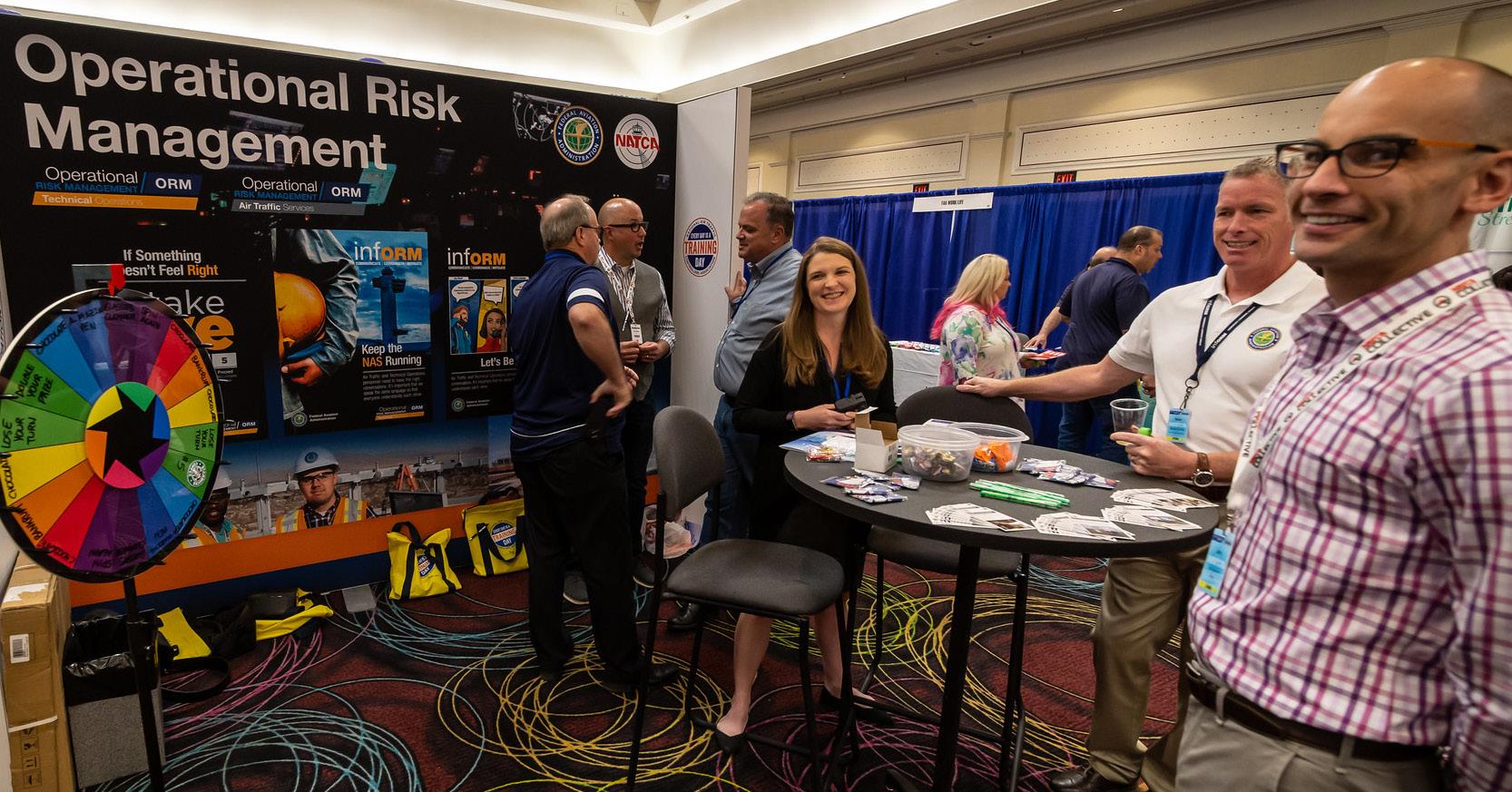
6 minute read
Focus on Safety // News from CFS 2019
FOCUS ON SAFETY
zby Brandi Teel, Public affairs specialist for NATCA
Advertisement

Communicating For Safety (CFS) is one of the premier aviation safety conferences in the world. This three-day conference is hosted annually in the United States by the National Air Traffic Controllers Association (NATCA). CFS brings together industry and government leaders from nearly every discipline in aviation. It is the only conference to focus specifically on the air traffic needs of the aviation community and the airspace system. CFS began in 1999 with just 40 attendees. It has grown to become an internationally attended conference, attracting more than 1,500 aviation industry representatives to discuss and improve safety. The program now includes three days of speakers, panel discussions, breakout sessions, and other activities. There is a exhibit hall where more than 70 exhibitors shared information with attendees.
NATCA welcomed more than 1,500 attendees to the 2019 CFS conference. The theme of CFS 2019 was “Every Day Is a Training Day.”
The conference featured impressive keynote speakers, including NATCA President Paul Rinaldi, NATCA Executive Vice President Trish Gilbert, Air Line Pilots Association International (ALPA) President Captain Joe DePete, U.S. Federal Aviation Administration Administrator Steve Dickson, and Airlines for America (A4A) President and CEO Nick Calio.
Panels covered topics including the Impact of Weather on the Operation, Pilot/Controller Communications, Surface Safety, Unmanned Aircraft Systems, Commercial Space, and International Collaboration.
Every Day Is a Training Day NATCA President Paul Rinaldi welcomed attendees and talked about CFS being the place where NATCA takes a stand for safety, because aviation safety is the cornerstone for everything our members do as aviation safety professionals. “The commitment we have to aviation safety is second to none,” said Rinaldi. “We are not trained just to get it right; we are trained to never get it wrong,” he said.
Rinaldi said that in the past, “[air traffic controllers] looked at training as a negative.” Years back, when controllers in the U.S.A. had an error, they were pulled off the boards and given remedial training. It was a way to shame someone in front of their colleagues, he said. In the past, training was used as a weapon. But all that changed in 2009, when NATCA and the U.S. FAA worked together to shift the ATC work environment to a safety culture, starting with the Air Traffic Safety Action Program (ATSAP). ATSAP helps resolve safety issues, while simultaneously protecting employees from punitive or disciplinary actions, as a result of reporting errors that could impact safety, provided those errors are not the result of gross negligence or illegal activity.
But Rinaldi added, now everyone is held accountable to a higher level of standards, and the culture and perception of training still needs to shift. He concluded by challenging the audience to change the aviation culture and embrace training, develop training, and take ownership of training. “I have high hopes that every one of us that plugs in, starts the future today to train like a professional."
z Photos: (previous page) NATCA Reloaded Committee Chair Dawn Johnson and NATCA Recurrent Training Representative Richard Kennington moderated the NATCA CFS 2019 Pilot/Controller Communications panel. (this page) The CFS exhibit hall features safety and modernization programs.
Supportive Work Environment NATCA Executive Vice President Trish Gilbert closed Day one of CFS with an impassioned speech supporting all members who are in need of assistance and outlining an array of NATCA-provided resources for members including medical advice and suicide prevention awareness.
Gilbert noted that medical restrictions for safety critical positions are stringent, and the obligation to report is serious. “This is a worldwide issue for air traffic controllers and many other safety critical professions.".
She then provided an overview of one program offered by the U.S. FAA for its employees. Workplace conflict can create a risk, not only to us as individuals, but to the system as a whole if there is no means to work through that conflict. That’s why the RESPECT initiative was created. It’s designed to establish and support a workplace that creates an environment of mutual dignity, support, and respect among all individuals who work together to protect the National Airspace System.
“Often we spend more time at work with each other than we are able to spend at home with our families,” Gilbert said. “No one should be surprised that we all have to continue to double down on being there for each other on education, awareness, mutual support, and dialogue about mental well-being.”
Gilbert stated that NATCA is committed to continuing to do everything it can to raise awareness and lift the veil on mental health. “We must continue to establish a work environment that is safe, inclusive, and supportive in giving each of us the opportunity to share our struggles and challenges. All of us -- working together -- can make things better for each other. Be there for each other and be kind to each other.”
Tech Talks For the first time, NATCA introduced Tech Talks prior to the start of CFS. NATCA and FAA subject matter experts gave detailed updates.
TBFM Reps Matt Gammon (NATCA) and Perry Casselle (FAA) explained the role of the TBFM Ops Team, which is to provide expertise and sustainment support, including adaptation, training, and implementation for facilities. They reviewed the TBFM tools
that air traffic controllers are using daily in their facilities and explained that with the use of integrated departure/arrival capability (IDAC), one of the newer systems of TBFM, release requests are now automated. That gives the tower a glimpse into what they are seeing in terms of future delays.

NATCA Commercial Space Rep Paul Behan told the attendees that if their facility has not yet been impacted by commercial space launches and reentry, it soon will be. Integration is a key word in space operations, but currently, the National Airspace System (NAS) is not integrated with commercial space operations. It’s segregated from it. As these operations are becoming more prevalent in the NAS, aviation safety professionals will have to work on ways to integrate commercial space with helicopters and airplanes. Currently, there are concepts under development to assist with collaborating and communicating efficiently for commercial space operations.
Remote Tower Reps Adam Rhodes (NATCA) and Matt Richardson (FAA) spoke to the audience about the current remote towers in the United States and future plans to build more. A remote tower is defined as a remotely operated air navigation facility whereby air traffic control services are provided, possibly at the airport or remote. It could be an array of cameras or a single view that gives you a 360-degree live view of an airport. There are currently two single runway remote towers in the United States: one in Leesburg, Va., and one in Fort Collins, Colo. The tower at Fort Collins has a converging runway that is rarely ever used, so it operates like a single runway airport. A third tower will be created, but a site has not yet been determined. The FAA is looking to remote towers to see if this is a better cost, savings-wise, than brick and mortar towers, to save money on replacing tower facility structures. The FAA is predicting that remote towers will cut down on costs by 60%.

NATCA Enroute DataComm Rep Ray Berndt shared updates with attendees on the digital link DataComm creates between ground automation and flight deck avionics. DataComm is a virtual digital connection between the controller, facility, and the pilot. It gives the ability to send a message to the pilot without error, eliminating the hearback/readback errors. This benefits the National Aviation System and the workload of the controller.
CFS 2020 NATCA is planning for CFS 2020 from Sept. 21-23, 2020, at Bally's in Las Vegas, Nevada. Registration for attendees and exhibitors for CFS 2020 will begin in late March. Look for more information at https://www.natca.org/events/cfs/. y











